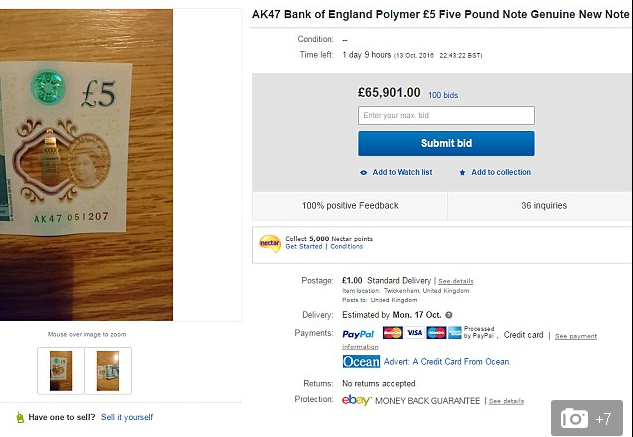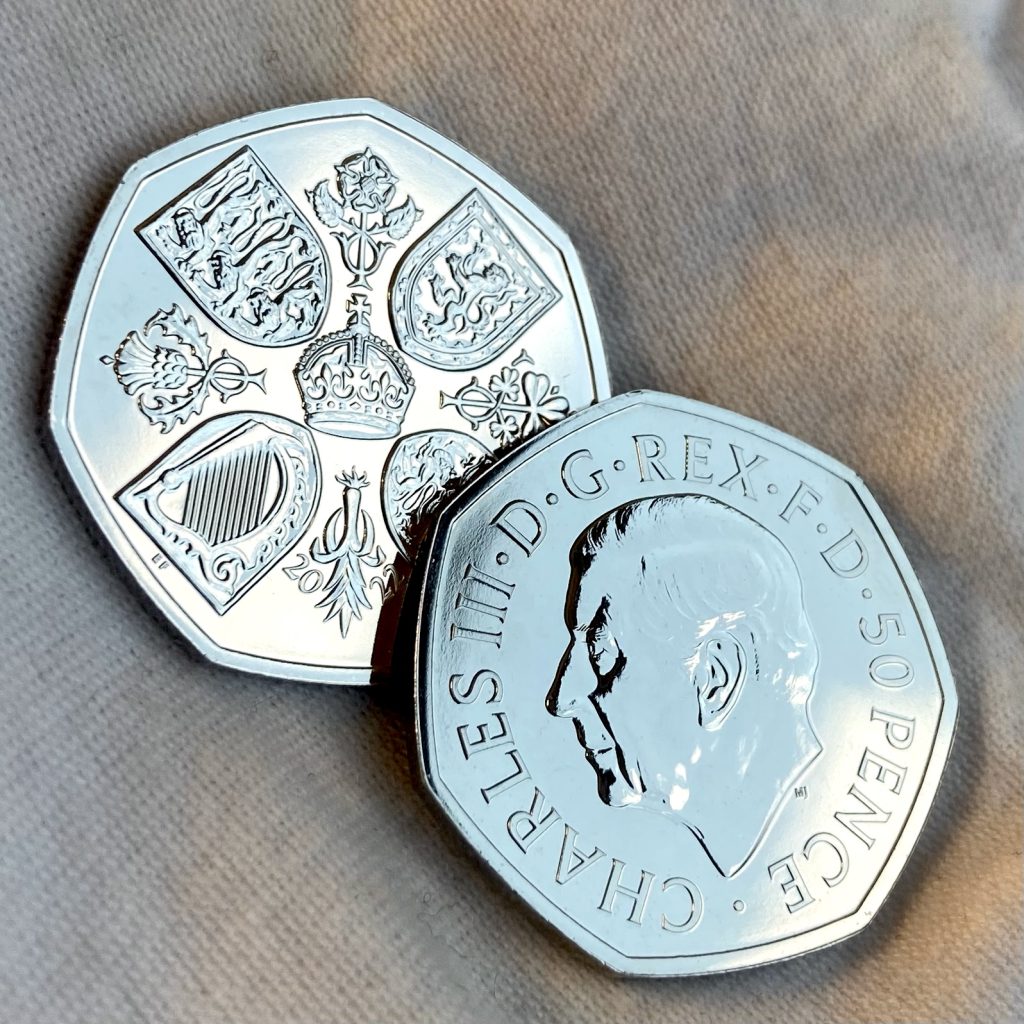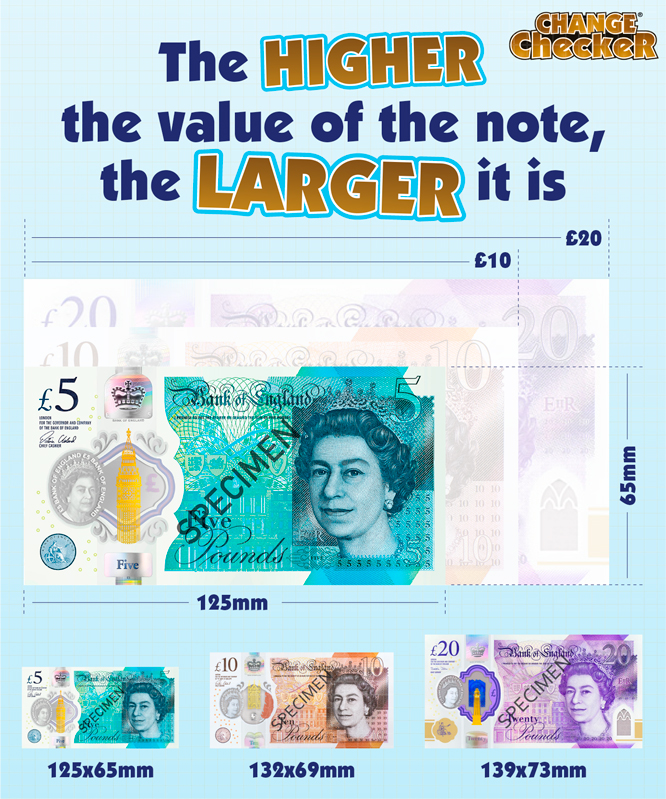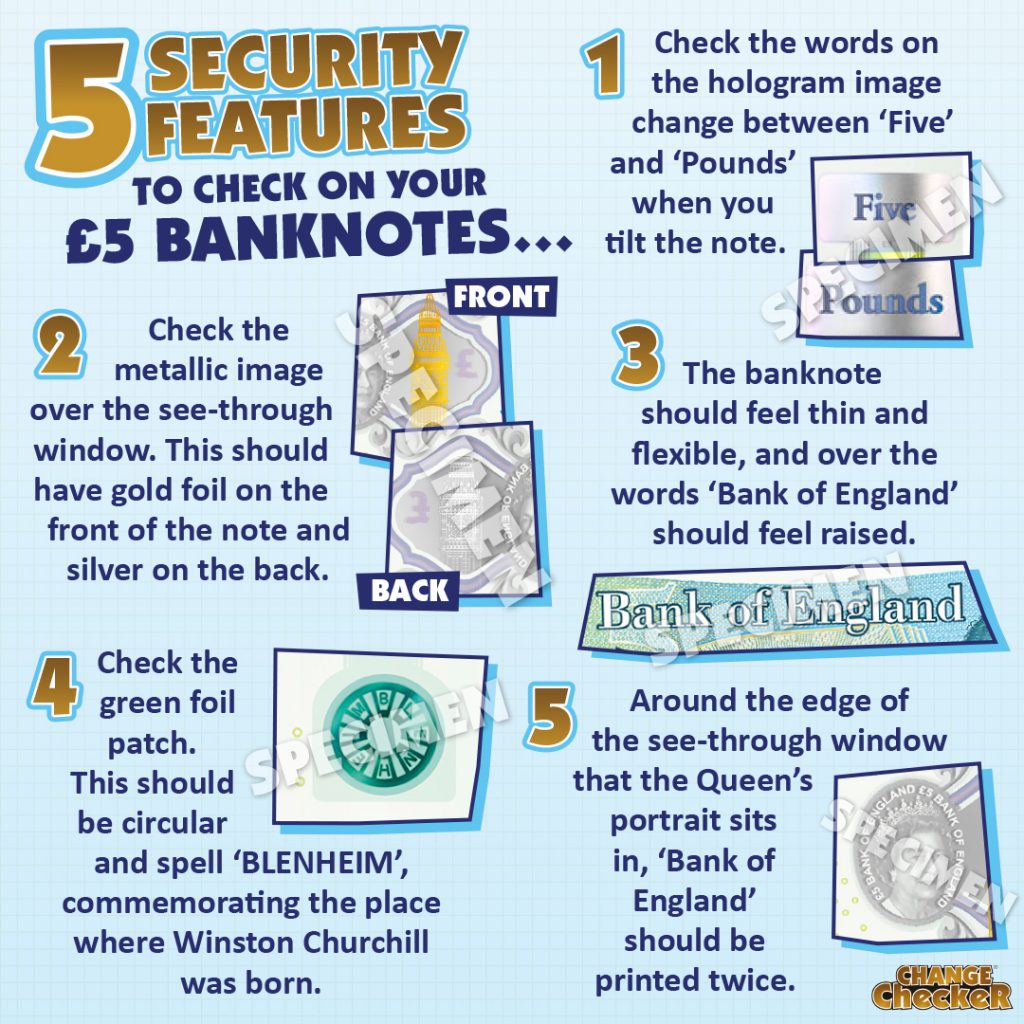Posts Tagged ‘banknotes’
Everything you need to know about Polymer Banknote Serial Numbers
The new King Charles III banknotes entered circulation on 5th June 2024, and whilst the reverse designs remain unchanged, this is the first time we’ve ever seen a King feature on UK banknotes – as they were introduced well into Queen Elizabeth II’s reign.

Image credit: Bank of England
It’s not that long ago, however since we last saw a major change in our banknotes, with the introduction of the first polymer banknotes in 2016. The polymer notes were issued to replace paper banknotes with a cleaner, safer and stronger alternative, and by 2022, all banknote denominations had been replaced with a new polymer version and the older paper notes were withdrawn from circulation.

Image Credit: Bank of England
The new polymer notes caused quite a stir, with collectors rushing to secure the notes with the lowest serial number. But what happened to the very first notes of each denomination?
£5 Polymer Banknotes
Whilst collectors were on the hunt for polymer £5 banknotes with low serial numbers when they first entered circulation in 2016, the very first ones never actually made it into circulation.
The Bank of England always hold back some of the notes with the earliest serial numbers, donating them to people or institutions that were involved in the development of the note, or who traditionally receive a note when a new series is issued.
Serial number Recipient
AA01 000001 – Her Majesty The Queen
AA01 000002 – Prince Phillip
AA01 000003 – Prime Minister
AA01 000004 – Chancellor of the Exchequer
AA01 000005 – The Governor (for the Bank)
AA01 000006 – Deputy Governor (responsible for Notes)
AA01 000007 – The Chief Cashier
AA01 000008 – Bank of England Museum
AA01 000009 – British Museum
AA01 000010 – Churchill family
AA01 000011 – Permanent Secretary of the Treasury
AA01 000012 – Chair of the Bank’s Court
AA01 000013 – Chris Salmon (former Chief Cashier)
AA01 000014 – De La Rue
AA01 000015 – Innovia
AA01 000016 – Royal Mint
AA01 001704 – Blenheim Palace
AA01 001874 – Lord King (former Governor)
AA01 001910 – The Home Secretary
AA01 001924 – The Chair of the Treasury Select Committee
AA01 001929 – George Osborne (former Chancellor of the Exchequer)
AA01 001940 – The Governor
AA01 001941 – The US Ambassador to the UK
AA01 001942 – The Foreign Secretary
AA01 001945 – Churchill War Rooms
AA01 001951 – David Cameron (former Prime Minister)
AA01 001960 – Churchill Archive, Churchill College Cambridge
AA01 001965 – Chartwell
AA01 002016 – Andrew Bailey (former Chief Cashier)

Image Credit: Bank of England
The Bank of England also conducted an auction of low serial numbered £5 notes on 3 October 2016, which raised £194,500 to be split between three charities – The Myotubular Trust, The Lily Foundation and Bliss.
The lowest polymer £5 note with the serial number AA01 000017 sold for £4,150!
It’s also worth looking out for banknotes with serial numbers that could be considered collectable, such as AK47 due to the machine gun connotations, and 007 which could be desirable to James Bond fans.
£10 Polymer Banknotes
The UK’s first polymer £10 note, featuring Jane Austen on the reverse, entered circulation on 14th September 2017, and, similarly to the £5 note, the first ones printed were donated.
In October 2017 some of the first Jane Austen Polymer £10 notes were auctioned and raised a staggering £260,900 for charities Candelighters, Haven House Children’s Hospice and Macmillan Cancer support.
The £10 note with the lowest serial number AA01 000010 sold for an incredible £7,200.

Other notes that fetched hefty sums were AA01 000011 and AA01 000014, selling for £5,200 and £3,500 respectively.
£20 Polymer Banknotes
Issued in 2020, the £20 was the third polymer banknote denomination to enter circulation.
Did you know? The letters at the beginning of a banknote’s serial number indicate its position on the sheet on which it’s printed. The 6 numbers that follow the letters refer to the number on the sheet the note is printed on.
With the £20 note being larger than the £5 and £10 notes, less notes were printed per sheet, however there were still an incredible 59,940,000 notes with an serial number starting AA!

Image Credit: Bank of England
As the polymer £20 note featured JMW Turner on the reverse, some serial numbers matching key dates relating to the painter the became highly collectible.
For example, 23 041775 represents Turner’s date of birth, whilst 19 121851 relates to his death and 17 751851 would be his birth and death combined.
True Turner fans might also look for 18 381839 representing the date he painted ‘The Fighting Temeraire’ (which featured on the new £20 note) and the date the painting was exhibited at the Royal Academy respectively.
£50 Polymer Banknotes
On the day that would have been Alan Turing’s 109th birthday (23rd June 2021), The Bank of England issued their final banknote in the polymer series, celebrating the famous scientist and mathematician.

Image Credit: Bank of England
As is tradition, Queen Elizabeth II received the very first polymer £50 note printed with the serial number AA01 000001, however AA01 000010 was donated to the Turing family in honour of Alan Turing featuring on the reverse of the £50 note.
Again, certain serial numbers matching key dates relating to Alan Turing became collectable, such as 23 061912 which represents Turing’s date of birth, 07 061954 which relates to his death and 09 071941 which represents the date that the enigma code was cracked by Turing and his team at Bletchley Park during WW2.
Safely store your banknote collection
With the release of these new banknotes, now’s the perfect time to start your banknote collection, by owning the Change Checker Polymer Banknote Collecting Pack – with space to securely house all four of England’s polymer banknotes!
King Charles III Banknotes – From print to pocket
The first King Charles III banknotes entered circulation on 5th June 2024, read on to discover their journey from print to pocket…

Credit: Bank of England
*** June 24 – BANKNOTES ENTER CIRCULATION ***
King Charles III banknotes finally enter circulation
On 5th June 2024, all denominations of UK banknotes featuring King Charles III entered circulation.
You can find out everything you need to know about the new notes, including details about their special security features and how to get your hands on one here >>
*** April 2024 – UPDATE ***
The King is presented with the first low numbered banknote of each denomination
On 9th April 2024, King Charles was presented with new banknotes of each denomination featuring his image. The portrait on the new notes is based on an engraving of a picture of His Majesty taken in 2013.
The governor of the Bank of England, Andrew Bailey and chief cashier, Sarah John visited His Majesty at Buckingham Palace where the new notes were presented. Mr Bailey told The King it was a “big moment” as previously, it had been only his mother Queen Elizabeth II who had appeared on British banknotes.

Credit: POOL/AFP via Getty Images
The King was presented with some of the first low numbered notes of each denomination, with the following serial numbers:
£5 CA 01 000001
£10 HB 01 000001
£20 EH 01 000001
£50 AJ 01 000001
Did you know? The letters at the beginning of a banknote’s serial number indicate its position on the sheet on which it’s printed. The 6 numbers that follow the letters refer to the number on the sheet the note is printed on.
*** February 2024 – UPDATE ***
CONFIRMED – King Charles III banknotes to enter circulation from June 2024
The Bank of England have confirmed that new banknotes featuring King Charles III would begin entering circulation from 5th June 2024.
We can expect to see new £5, £10, £20 and £50 notes featuring The King’s portrait on the obverse, however the reverse designs will remain unchanged. Currently, banknote reverse designs feature Sir Winston Churchill, Jane Austen, JMW Turner and Alan Turing (from the £5 to £50 respectively).

Credit: Bank of England Flickr
The new notes will only be issued when there is sufficient demand or to replace worn or damaged older notes featuring Queen Elizabeth II – meaning that both monarchs will co-circulate on UK banknotes for the foreseeable future. The Queen Elizabeth II notes that are already in circulation will still be accepted in shops even after the new notes start to enter circulation.
Did you know? There are approximately 4.7 billion Queen Elizabeth II banknotes currently in circulation, worth an estimated £82 billion!
*** January 2024 – UPDATE ***
The first King Charles III banknotes go on display in the Bank of England Museum
New King Charles III banknotes are due to go on display as part of a special exhibition in The Bank of England Museum. Whilst we’ve seen some images of the new polymer notes featuring The King, this will be the first opportunity to see the them in person before they go into circulation later in the year.

Credit: Bank of England Museum
As well as the new banknotes, the Future of Money exhibition will feature digital currencies, crypto assets, the increasing role of AI and explore the lifespan of cash.
The free exhibition will open in the Bank of England Museum on 28th February and will run until September 2025.
*** November 2023 – UPDATE ***
The Bank of England begin printing millions of King Charles III banknotes
The Bank of England have announced that banknotes featuring King Charles III are being printed at a rate of 6 million in 24 hours. However despite this, the new notes won’t begin circulating until mid-2024.

Credit: Bank of England Flickr
The delay in new notes entering circulation is caused by machines such as self service tills not being able to recognise the new image.
The Bank of England’s chief cashier, Sarah John, said “There is a lot to do to ensure that machines used up and down the country can accept the banknotes. They all need to be adapted to recognise the new design, with software updates, and that takes months and months. Otherwise, we will be putting a banknote out there that people simply would not be able to use.”
A more sustainable transition
Taking guidance from the Royal Household, the new banknotes will only be issued to replace worn or damaged Queen Elizabeth II notes, consequently two monarchs’ portraits will co-circulate for some time!
This transition phase will minimise the environmental and financial impact of the change, in keeping with the King’s vision for a more sustainable future.
His Majesty’s portrait will now appear on the front of the notes, however there will be no changes to the current reverse designs:
- Winston Churchill (£5)
- Jane Austen (£10)
- JMW Turner (£20)
- Alan Turing (£50)




But, any serious collector knows that it’s not just the design you should be looking out for…
King Charles III Banknotes – ‘Rare’ Serial Numbers to look for
AA01
Remember the excitement when the first polymer £5 note was issued?
I’m willing to bet that every single person in the country checked theirs at some point to see if they were lucky enough to find one with the prefix AA01.

The annual Bank Of England charity auction held at Spink and Son Ltd in London auctioned off a Queen Elizabeth II polymer £5 note with the serial number AA01 000017 for £4,150.
And the following year, a Jane Austen Polymer £10 note with the serial number AA01 000010 sold for a staggering £7,200 – over double the guide price!
As King Charles III becomes only the second monarch to appear on circulating Bank of England notes, i’m expecting a similar level of demand for the first run of AA01 notes during His Majesty’s reign.
AK47
Considered collectable due to the machine gun connotations, polymer notes with the prefix AK47 were thought to be worth tens of thousands of pounds following the new £5 release in 2016.
This idea emerged after a £5 banknote with the prefix AK47 fetched a winning bid of £80,100 on eBay.
The seller must have been overjoyed with the jackpot amount but unfortunately the buyer had no intention of paying up.

Continue learning about ‘rare’ serial numbers to look out for >>
The first King Charles III 50p Coin

The first coin bearing the portrait of King Charles III entered circulation in December 2022 – have you found on in your change yet? Use our helpful collector map to see where in the UK they’re being spotted to help you hunt one down >>
Join our Community Group of Facebook to swap with other collectors!
Swap, learn, and share with other collectors on the only official Change Checker Facebook group >>
How to spot a counterfeit banknote!
In 1725, printed banknotes were first introduced in the UK, with the purpose of fixed denominations. The £20 banknote came first and following a shortage of metallic currency during the Seven Years’ War in 1759, £10 and £15 notes were issued.
The £5 note was the last to be introduced in 1793. But since their introduction, banknotes have been subject to fraudulent behaviour, so much so, additional banknotes have been executed partly to make forgery of such more difficult.
Fraudulent notes are also called ‘counterfeit banknotes’ and although less and less are going into circulation — with less than 1 in 40,000 banknotes being counterfeit in 2021 — it’s still an important topic to discuss!
Although polymer banknotes are a lot harder to replicate than the traditional paper ones, you should still check your notes when you receive them. But the questions is, how do you spot a counterfeit banknote?
Sizing
For every polymer banknote, a good starting point is to look at its size.
The higher the value, the larger it is. Here we can see the approximate sizes of the £5, £10 and £20 polymer banknotes:

Security Features
Crucially, you should always check your polymer banknotes for the following key security features:

Changing hologram:
- All polymer notes when tilted from side to side and up and down, should feature word changes within their holograms.
- For the £5 banknote, the words should change between ‘Five’ and ‘Pounds’, the £10 banknote between ‘Ten’ and ‘Pounds’ and so on.
See-through windows:
- Each banknote of denomination has a metallic image over the see-through window on it.
- Both the £5 and £10 polymer notes have gold foil on the front of the note within this part and silver on the back.
- The £20 note has a blue and gold foil on the front of the note for the metallic image and silver on the back.
- Lastly, the £50 note has gold and green foil on the front and silver on the back.
Feel of polymer and raised print:
- Polymer is a thin and flexible material so check that the material of your banknote feels this way.
- On each denomination banknote as well, the words ‘Bank of England’ should feel raised.
Foil patches:
- Each banknote denomination will have a different foil patch on it.
- For the £5 note, this is a green foil patch — it is circular and spells ‘BLENHEIM’ to commemorate where Churchill was born.
- The £10 note has a copper foil patch, and this is shaped as a book.
- Check it contains the letters ‘JA’, in tribute to Jane Austen.
- A purple foil patch shaped in a circle with a ‘T’ at its centre, to represent JMW Turner, is imprinted on the £20 note and lastly, a metallic red foil patch can be found on the £50 note and contains the letters ‘AT’ for Alan Turing.
- The patches can all be located behind the silver crown on the front of the notes.
The queen’s portrait in the see-through window:
- The Queen’s portrait which is printed within the see-through window can be found on all the banknotes with the respective denomination and the words ‘Bank of England’ printed twice.
- For example, on the £5 note the inscription ‘£5 Bank of England’ will be printed twice around the windows edge.
This is a just a small selection of the security features that you can find on your polymer banknote. Can you name some of the other features? Let us know in the comments below!
Counterfeit banknotes have no monetary value and cannot be reimbursed. The best thing to do if you encounter a counterfeit banknote is take it to your nearest police station.
They will ask you to fill out a form and once taken from you, will send the suspect note(s) to the National Crime Agency and if found to be counterfeit, to the Bank of England for further examination.
If you’re interested in coin collecting, our Change Checker web app is completely free to use and allows users to:
– Find and identify the coins in their pocket
– Collect and track the coins they have
– Swap their spare coins with other Change Checkers
Sign up today at: www.changechecker.org/app



